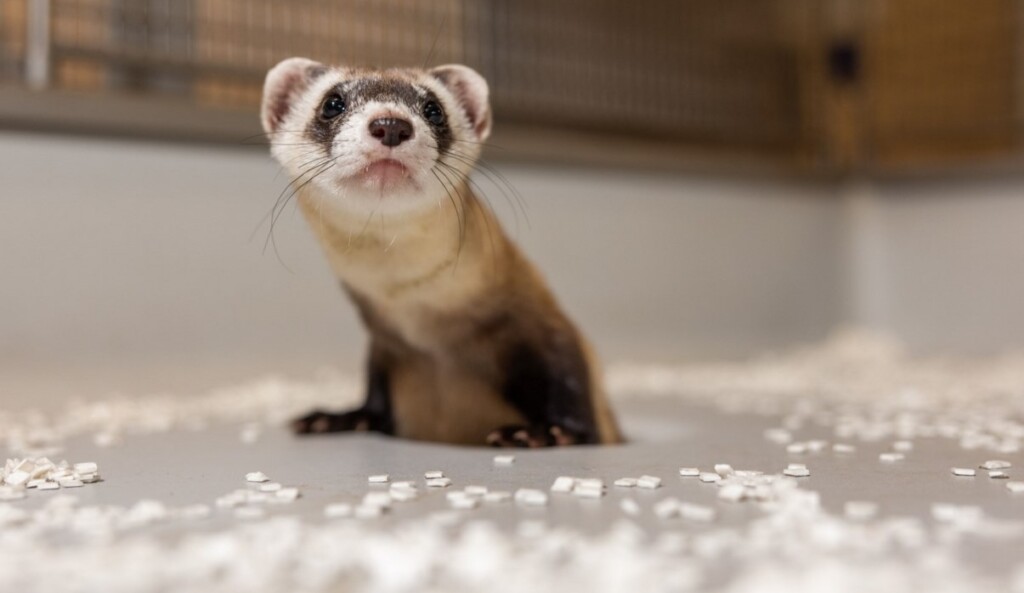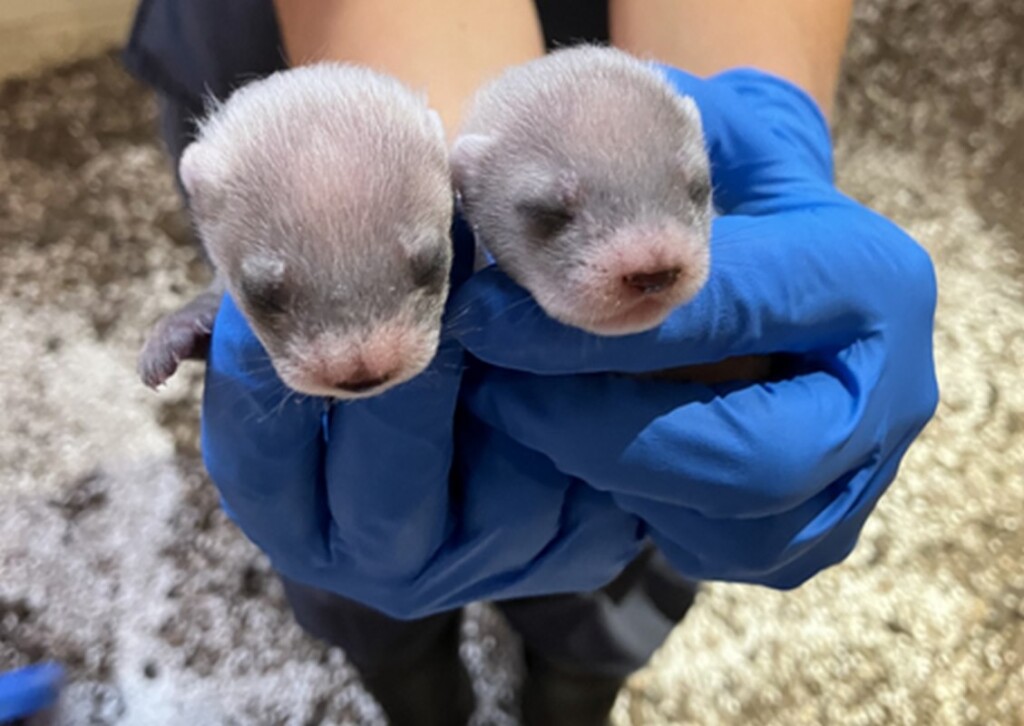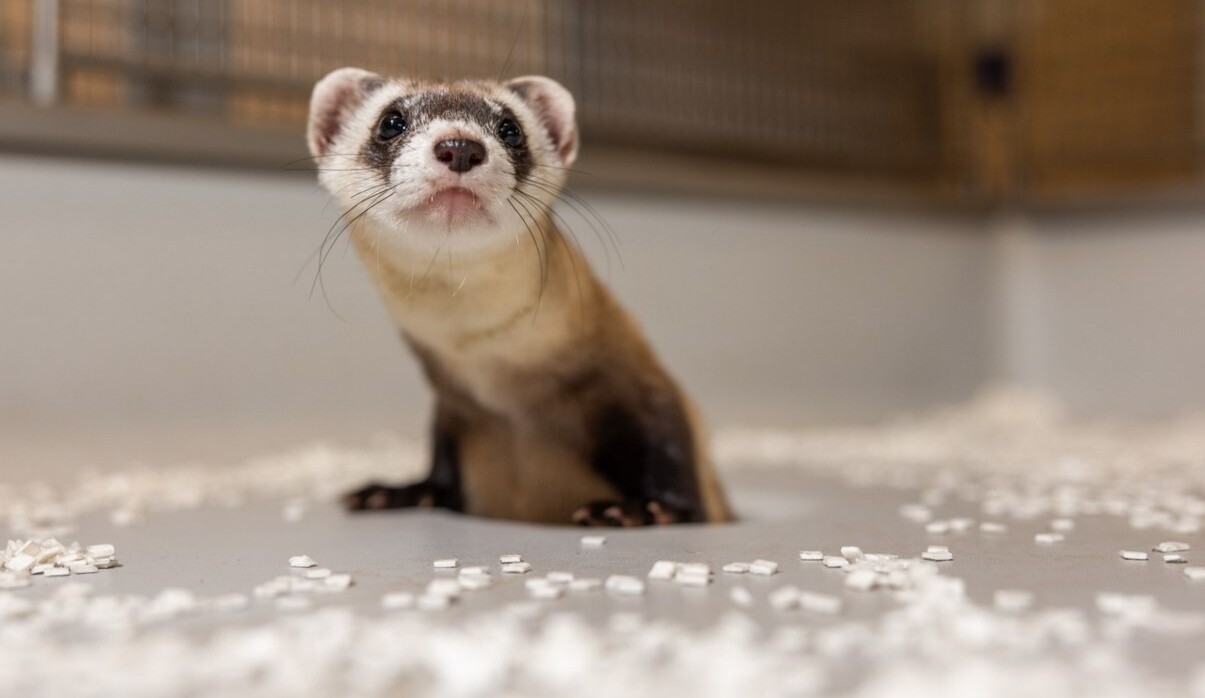
In Front Royal, a black-footed ferret named Antonia has just given birth to two healthy kits.
Antonia was cloned from the DNA of a ferret taken into captivity in Wyoming. Her name was Willa and she died in the 1980s, but through her DNA, one of the most endangered North American mammals will have a new genetic lineage that may help it one day recover into the voracious, adorable hordes that once roamed the North American Prairie.
The black-footed ferret program, run by the US Fish and Wildlife Service, was the first time cloning was used as a conservation tool in North America. Antonia was one of three ferrets cloned in 2020. The others are named Noreen and Elizabeth Ann and live in a Colorado facility.
All black-footed ferrets are descended from seven individuals, resulting in unique genetic challenges to recovering this species. Cloning may help address the issues of genetic diversity and disease resilience in wild populations, as without an appropriate amount of genetic diversity, a species often becomes more susceptible to diseases and genetic abnormalities, as well as limited adaptability to conditions in the wild and a decreased fertility rate.
Once thought to be extinct and currently listed as an Endangered Species, black-footed ferrets were rediscovered by a Wyoming rancher whose dog dropped a recently deceased ferret on his doorstep. A small colony of 24 individuals was eventually located, which started the captive breeding program in which 7 reproduced.
FROZEN ZOOS: How ‘Frozen Zoos’ Are Helping Save Vanishing Species
These 7 have led to thousands of captive-bred ferrets being dropped onto the grasslands of Wyoming, Colorado, and other states, but at great risk of poor genetic diversity. By contrast, Antonia’s kits, and those of Noreen, who is also liable to breed (Elizabeth Ann isn’t) hold three times the genetic diversity as the currently wild population members.

In September, Colorado wildlife officials were enthusiastic about reports of at least two healthy litters of wild-born black-footed ferrets at May Ranch in southeastern Colorado, and program members speaking with the Colorado Sun said that if an 8th genetic lineage could be added to this population, that would make a major difference over the generations. Antonia’s offspring will not be reintroduced, but may eventually lead to future offspring who will be.
OTHER STORIES LIKE THIS: 12 Critically Endangered Red Wolf Pups Are Born in North Carolina – A Conservation Baby Boom
Experts say proof that cloned animals can reproduce safely is key to the healthy restoration of the severely endangered ferrets, and increases the confidence conservation scientists may have when saving other species from extinction in the future, such as the northern white rhino, by attempting to clone them.
SHARE This Amazing News For The Return Of This Important Species…




















